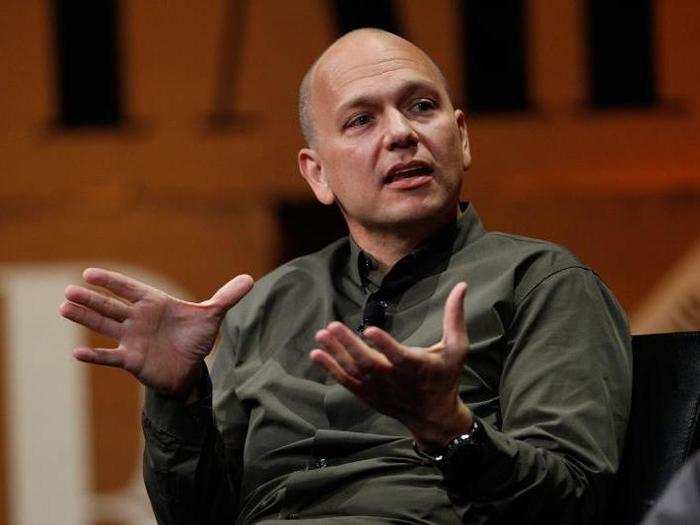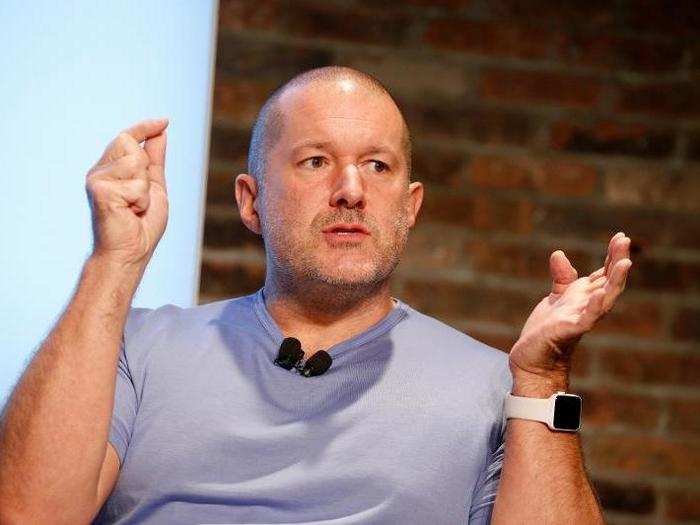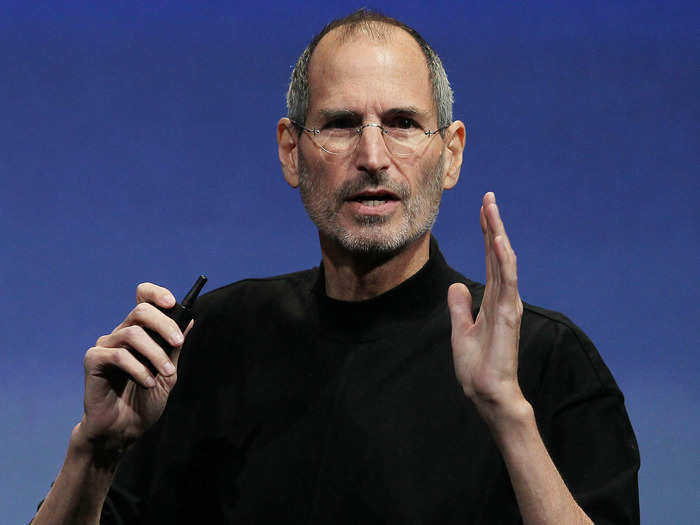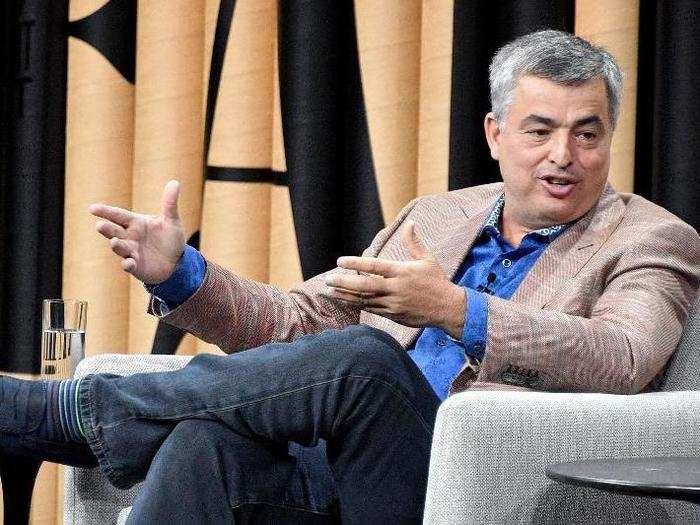- Home
- slideshows
- miscellaneous
- 'Where are they now?' Here's what happened to Apple's famous leadership team that launched the first iPhone in 2007
'Where are they now?' Here's what happened to Apple's famous leadership team that launched the first iPhone in 2007
Phil Schiller is still at Apple. He's the senior vice president for worldwide marketing at the company; you've probably seen him at one of Apple's iPhone unveilings.

Tony Fadell left Apple in late 2008, citing “personal reasons.”

Fadell actually started at Apple as a contractor. In the late 1990s, he had tried to start his own electronics company called Fuse, but failed to get financing. In 2001, he was brought on by Apple to help design the iPod; by April of that same year, he was named the senior director of the iPod and "special projects."
Fadell caught the eye of Steve Jobs when he was first hired, thanks to an idea he had for a disc-based music player that would work with an online store for music, according to The New York Times. This idea, of course, would become the powerful ecosystem of the iPod and iTunes.
In 2006, when the iPod was in its heyday, Fadell replaced Jon Rubinstein as the senior VP of the iPod Division. But two years later, Fadell would leave Apple for "personal reasons," according to the Wall Street Journal.
After he left Apple, Fadell traveled around the world and discovered that people were having trouble saving energy in their homes. While he was still in Paris, Forbes says he developed the business plan for what would become Nest Labs, or Nest, which he co-founded with another former Apple employee, Matt Rogers.
Fadell led Nest for six years until he resigned from the company in June 2016. Since then, Fadell has been working as Principal at an investment firm called Future Shape, which advises engineers and scientists working in tech.
Jony Ive announced his departure from Apple in June 2019.

Sir Jonathan "Jony" Ive said he had an epiphany while designing on a Macintosh as a student at Newcastle Polytechnic. "I discovered the Mac and felt I had a connection with the people who were making this product," Ive told Steve Jobs' biographer Walter Isaacson.
Ive started a design company after college called Tangerine, which won a consulting contract with Apple. In 1992, Apple offered Ive a job in the company's design department. By 1996, Ive was the head of Apple's design group. But Ive said he wasn't happy around that time. Steve Jobs was not working at the company during that period, and Apple was focused more on maximizing profits than perfecting product designs.
All that changed in 1997, when Jobs returned to Apple.
Jobs met Ive when he was touring Apple's design studio. The two bonded quickly — according to former Apple engineer Jon Rubinstein, Ive and Jobs would regularly get lunch together, and Jobs would finish his day by dropping by the design studio to talk with Ive.
Ive and Jobs would go on to design some of the most iconic products in Apple's history, including the iMac, iPod, iPhone, iPad, and even Apple's massive new campus, Apple Park. They weren't just coworkers, or even friends; they were soulmates, according to the many people who worked and lived with them.
After Jobs died in October 2011, Ive continued on at Apple, but his enthusiasm was greatly diminished. Despite getting a new title in 2015, "chief design officer," Ive was largely absent from Apple, and was reportedly showing up to company headquarters as little as twice a week. He also began to "shed responsibilities," according to Bloomberg.
Ive spent a lot of time traveling, and working with fellow designers on fun side projects and charity auctions. On June 27 of this year, Apple announced that Ive would be leaving to form a new company, called LoveFrom, of which Apple will be a client. Ive said the name LoveFrom was inspired by Jobs, who said he was motivated to make things with love and care, even though you'll probably never meet the person who bought it.
Steve Jobs died on October 5, 2011, succumbing to a rare form of pancreatic cancer.

Steve Jobs was Apple's visionary cofounder, and the face of the company since its inception in the mid 1970s.
Jobs helped design some of the most influential Apple products of all-time, but he was also the company's best salesman: He was a smart, charming person who had a unique "reality distortion field," according to people who met and worked with him, which could convince people to work hard for him, invent or engineer beyond what was thought to be possible, or simply buy his products from stores. Jobs was the biggest draw of Apple's product unveilings, as he always had surprises up his sleeve, or "one more thing" he wanted to show off for the most diehard Apple fans. He was incredibly good at building hype and excitement around computers, which were known as cold and inaccessible machines at the time.
Jobs was ousted from Apple in 1985 by John Sculley, the CEO at the time who Jobs actually picked himself. That same year, Jobs cofounded NeXT Computer with a handful of Apple leaders. Jobs would rejoin Apple in 1997 when his old company acquired his current startup. He rose to power after convincing Apple's board to oust its CEO at the time, Gil Amelio. Jobs became interim CEO, and eventually "interim" was dropped from his title.
Over the next decade, Jobs and his team created some of the most important products in Apple's history, including the iPod, iTunes, iPhone, iPad, and MacBook Air. But he was also fighting for his life behind the scenes: He was diagnosed with pancreatic cancer in 2003, and resisted medical advice for years, choosing instead to embrace alternative medicine in hopes of stopping the disease.
Jobs died in 2011, which led to an outpouring of love from around the world. Apple still keeps its memorial page up for Jobs to this day.
Scott Forstall left Apple in 2013, after the botched debut of Apple's Maps app as part of iOS 6 in late 2012.

Forstall met Steve Jobs in 1992 while they were both working at NeXT Computer. After they both made the transition back to Apple in 1997, Forstall was put in charge of designing the user interface for Apple's Mac computers. He also helped create Apple's Safari web browser.
Forstall would go on to spearhead iOS, the iPhone's operating system. He also created the iPhone's software development kit (SDK) to help third parties build iPhone apps, according to Bloomberg, and he was also responsible for creating the App Store.
In 2006, just one year before the first iPhone launched, Forstall was also put in charge of Apple's software releases for the Mac, and appeared at many of Apple's keynotes over the ensuing years to talk about new software features for users and developers. Many believed Forstall would be the one to replace Jobs if and when he ever decided to step down.
Forstall led iOS efforts after Steve Jobs passed away in 2011, but the following year, he was caught in the middle of a massive controversy when Apple replaced the default mapping application in iOS, Google Maps, with its own homegrown solution that was buggy, half-baked, and even dangerous to use. Apple announced Forstall would leave the company in 2013. His duties were redistributed among four Apple executives, including Jony Ive, Craig Federighi, Eddy Cue, and Craig Mansfield.
After Forstall's departure, stories started coming out about the executive's behavior among Apple employees and leadership. When Tony Fadell learned of Forstall's departure, he told the BBC that "he got what he deserved." Forstall was also criticized for his creation of Siri, his strained relationships around the office, and his reported clash with Jony Ive over design elements in Apple's software.
Forstall didn't make any public appearances for years after his exit from Apple. According to The Information, Forstall had spent time traveling, advising startups, and working on philanthropic efforts. He publicly resurfaced in 2015, on Twitter of all places, when he announced he was co-producing a Broadway musical, which went on to win five Tony awards. Forstall is reportedly enjoying producing and advising on occasion; he's reportedly an advisor for Evan Spiegel's Snap.
Eddy Cue is still at Apple. He's the senior vice president of Internet software and services.

Eddy Cue joined Apple in 1989; in those days, he was a manager for software engineers and led the company's customer-support teams.
Over the years, Cue helped create some of Apple's most important platforms, including Apple's online store, the App Store, the iTunes Store, and Apple's "iLife" applications, including iBooks, iMovie, and more. He also resuscitated iCloud, which was one of Apple's most unpopular services early on, and is credited for suggesting Apple make an iPad Mini, according to Buzzfeed.
These days, Cue oversees Apple's biggest software-based services, including Apple Music, Apple Maps, Apple Pay, iCloud, the iTunes Store, and more.
Popular Right Now
Popular Keywords
Advertisement